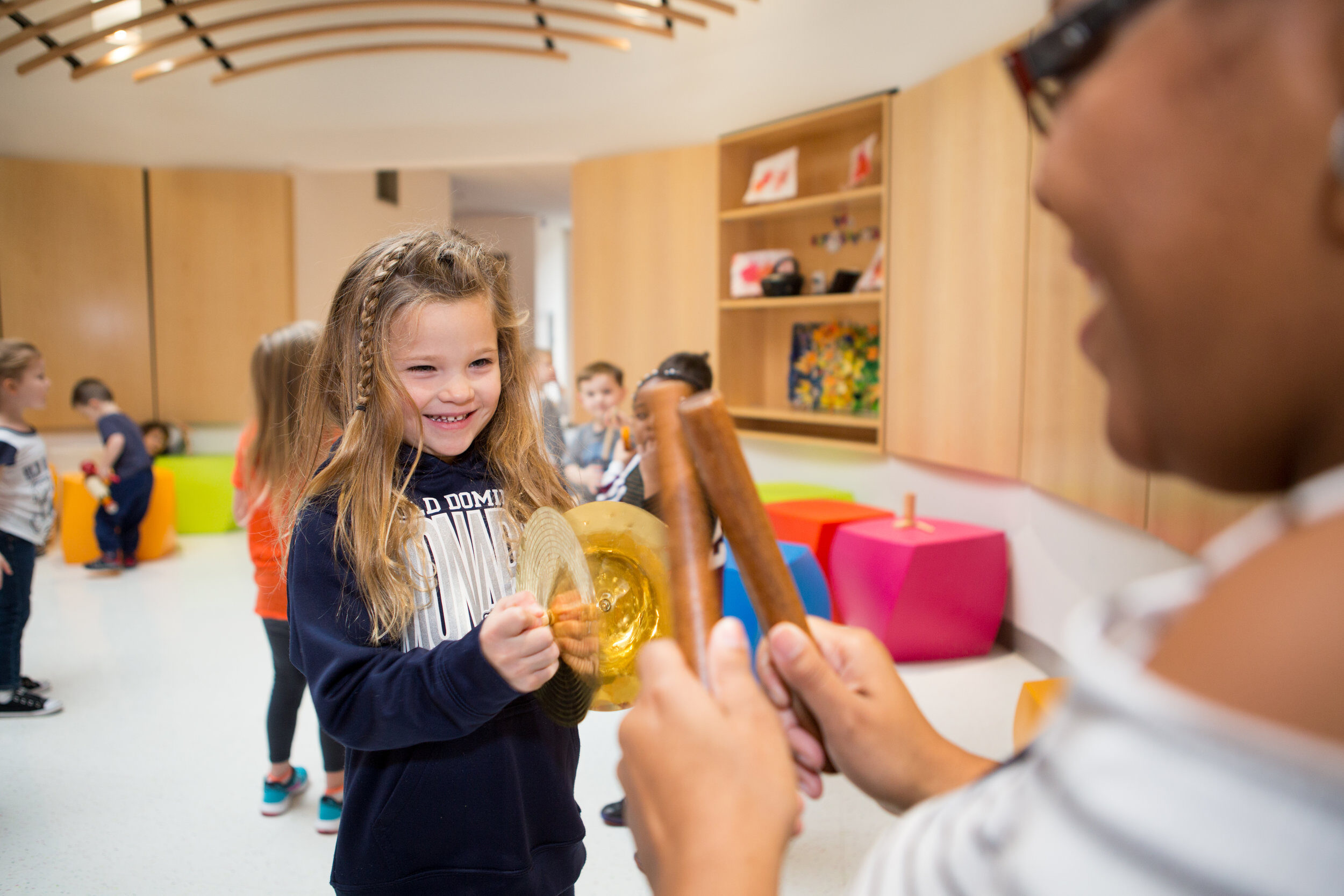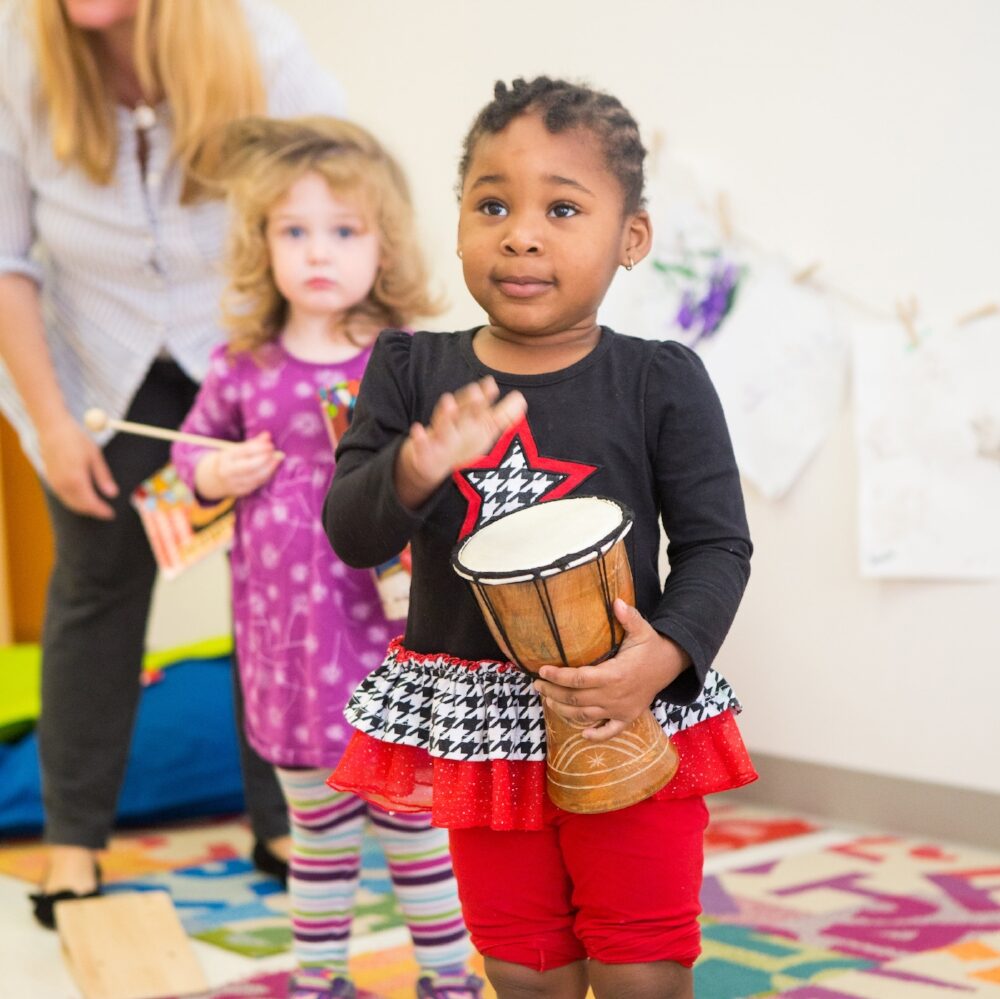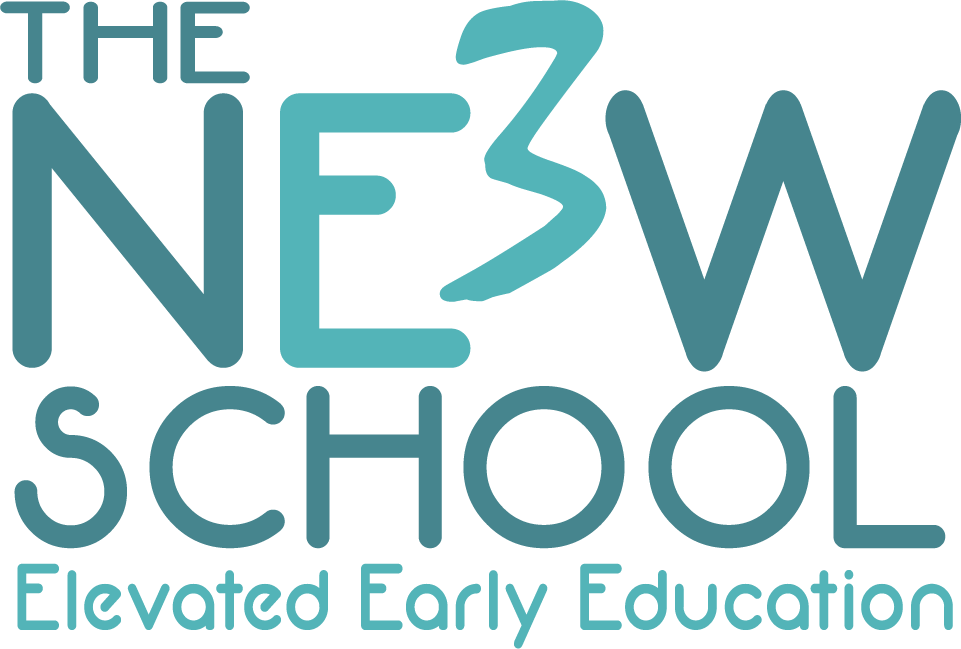As a former math teacher, I am fascinated by the many patterns of mathematics. In fact, one of my favorite topics to teach was the Fibonacci sequence*. It is amazing how many different places you can find numbers from that sequence in nature, art, geometry, architecture, and even music. It isn’t surprising that researchers have found a strong link between mathematics and music. In my experience, I found that the best math students were often very competent musicians.
That leads me to wonder if intentionally exposing children to music at an early age may help create more confident and competent mathematicians. The research seems to support that music can, at the very least, help children better understand and remember some emergent mathematical concepts. There are three related but different ways of using music to encourage development of math skills in young children.
First, we all remember singing songs as small children that helped us learn concepts: the Hokey Pokey, Old MacDonald, etc. Studies have shown these musical mnemonics can be a very powerful learning tool for any subject. Once words are set to music, the mind connects the two and a very powerful memory is created which can be retrieved easily. A web site for finding a song for just about any concept and most age groups is www.songsforteaching.com.
Second, there is evidence to show that just adding musical elements to enhance a math lesson or activity helps children pay better attention, and they are better able to recall concepts taught. The music stimulates parts of the brain that help children form mathematical concepts.
Finally, music is inherent in all of us; we hear music, and we rock our babies, clap our hands, tap our feet. These responses are reactions to musical elements such as steady beat, rhythm, and melody, all of which reflect mathematical concepts.
The steady beat of a song helps children understand the important concept of one-to-one correspondence (matching up one thing with something else). Thus, by clapping to the steady beat of a song, you are connecting the beat with your clap and reinforcing the concept of one-to-one correspondence.
Rhythm is similar to steady beat but where steady beat is constant, rhythm varies. Rhythm helps with one-to-one correspondence but it also helps children learn about patterns. Even newborns learn about rhythm as parents sing lullabies to them and rock them to the rhythm of the music.
Provide children with an instrument to shake or tap in rhythm with music. As children get older, sing songs with them and encourage them to repeat the song or extend the pattern; for example, when singing “Old MacDonald,” stop after “With a moo moo here,” and have your child repeat the phrase or extend the pattern by adding “and a moo moo there.” Encouraging your children to express themselves by moving differently to varying sounds or rhythms motivates the brain to categorize sounds and understand patterns within music.
We all know music has many benefits from aiding relaxation to stimulating the mind. It is exciting to realize that music provides children with their first patterning experience and helps engage them in mathematics even when they don’t recognize the activities as mathematics.
*If you are not familiar with the sequence, it is formed by starting with the two numbers, 1 and 1, and each subsequent number is the sum of the previous two: 1,1,2,3,5,8,13,21,34, etc. There are books written about it but you can also find many sites on the internet that will illustrate how often it is found in our lives.
By Mary Hubbard, Educational Advisory Board Member
« How to Pick a PreschoolDo you have yoga at your morning meeting? We do! »



